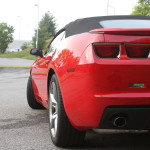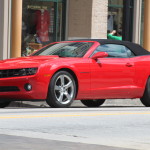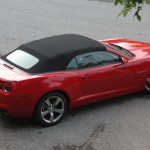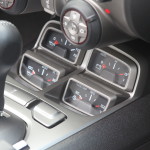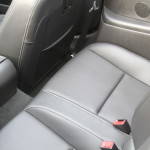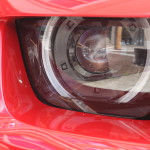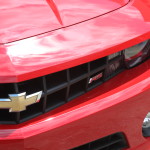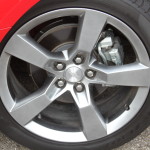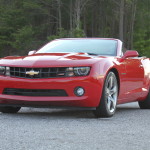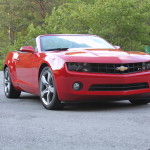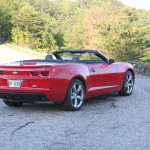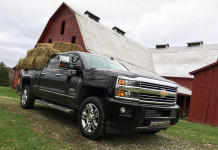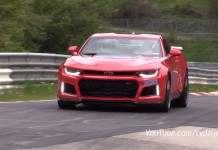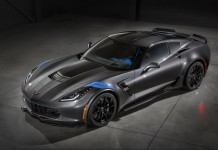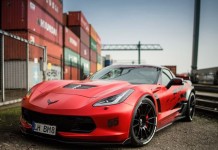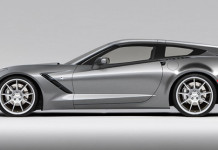Back in 1967, America fell in love with the Chevrolet Camaro. The relationship that ensued seemed as if it would last until the end of time, but fairy-tale endings can’t always happen. In 2002, the Camaro was axed due to poor sales and the American people were left with only one pony car. That is until 2010 when Chevrolet walked out for an encore presentation of the once iconic muscle car to create the fifth generation Camaro. Of course, Chevrolet couldn’t stop just there and decided to sweeten the deal by adding a rag top model to produce the 2011 Camaro Convertible.
The Camaro is another story of what happens when Chevrolet dips into their parts bins from around the world. Riding on the Zeta platform, the Camaro shares the same underpinnings as the Australian Holdens; specifically the Commodore and Statesman as well as the now defunct Pontiac G8. This front engine rear wheel drive platform uses a fully independent suspension with struts/springs up front and a multilink coil-sprung rear. For a muscle car, it is a very modern design and is the only Zeta car being produced in North America.

Our test car was a 2011 Convertible with the RS package. This package added 20” wheels, high intensity discharge headlights and a subtle rear spoiler and RS unique tail lights. The price for all that jazz is an additional $1,500 and with the $1,185 six-speed automatic, our tester’s total MSRP was $35,335. That price gets you quite a lot of neat items such as a digital heads up display for speed and engine revs; a Boston Acoustics eight speaker stereo with a 10” subwoofer; XM radio with free 3 month subscription; and leather wrapping galore on the interior. And the Convertible gets the Camaro’s coolest party piece, the four-pack auxiliary gauges located by the shifter to show engine and transmission temp, battery voltage and oil pressure.
Like the Mustang it competes directly with, the Camaro’s biggest seller is the V6 model and that’s just what we got: a 3.6 liter direct injected DOHC V6 with variable valve timing to produce 312 horsepower (an 8 hp increase from 2010) and 273 lb-ft of torque. Matched to the Hydra-Matic six-speed auto with manual shift mode, one of our testers’ biggest selling points was its fuel mileage. In town, the Camaro averaged a solid 18 mpg and on the freeway, this driver saw a steady 25 mpg. Don’t let those numbers fool you though as the V6 has some get-up and go and will hit 60 mph in just a scant over 6 seconds.

This engine and transmission combination works wonders in other GM vehicles and in the Camaro, the story is just the same. Even though the RS may be geared more towards long distance cruising than track work, it didn’t disappoint when the road turned curvy. In the foothills of the Tennessee Smoky Mountains, our RS handled itself in a composed manner. The engine was very willing and able to haul around the convertible’s weight with enough gusto to keep us smiling. More impressive than the engine was the transmission which in full manual mode would hold onto whatever gear was selected. Not once did it abruptly up-shift or downshift and second and third gear kept the V6 in its power band. That power band was however rather high (for a muscle car) and on a few tighter hairpin corners first gear was needed to feel a fast exit. This V6 can feel peaky and proof of that can be found in its max torque rating which occurs at 5200 rpms.
As long as you keep the engine singing, you won’t be disappointed. Despite the convertible’s weight (3986 lbs) the steering is excellent and very communicative. Not once did we second guess what the front end was doing and the Camaro always told us when it was at its limits. The body stayed flat and there was practically no wallowing in corners; the Zeta platform is more than capable of handling the heavy weight of the convertible. This doesn’t mean that its large size isn’t an issue as this driver couldn’t help but think about how much faster the RS could be if it was even 500 lbs lighter.
Once the convertible gets out of the mountains, a slight conundrum begins. Even though it may play well on a back road, it feels best on the highway and cruising around town. At lower rpms, the engine is very quiet and calm and the transmission’s shifts are almost unnoticeable. The ride is slightly choppy (mainly in part due to the large wheels) but it only gets bad when the road become really rough. The steering is right in between too light and too heavy and never becomes bothersome at parking lot speeds. For a sports car, the RS convertible feels happiest driving around town and staying steady on the freeway. These situations were where our tester’s true calling was realized: this is a boulevard cruiser.

The ultimate goal of a boulevard cruiser is to show off and that is exactly what our test car did. When the electric-powered soft top finally comes down, the RS looks absolutely fantastic. The retro shape is further emphasized with the flat deck and low windscreen and the front face actually looks evil. This car looks so good that pedestrians gave “thumbs up” more than once and everyone who saw it made a comment on its presence. And that is just it; the most important part about the Camaro Convertible is its presence; this is not a subtle car. If traveling under the radar is your thing, than stay far away from the convertible as it is almost impossible not to be seen. Humble is a foreign concept to the Camaro Convertible as it always brings attention and sometimes a driver wants just that. There is nothing wrong with owning an eye-catching icon, especially one with such heritage. And there is nothing in the rule book saying that good-looking icons have to be unreliable, inefficient and uncomfortable because the 2011 Camaro RS Convertible does all of those things and more while still looking absolutely timeless.

